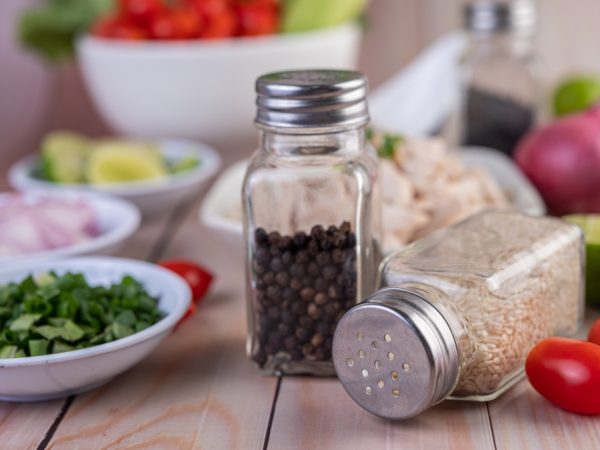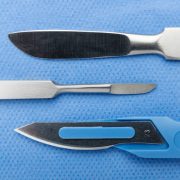Otah Bun – Fiery Fish Otah in Soft Bread, Perfectly Baked

The fusion of tradition and modern convenience is at the heart of many iconic street foods, and few represent this better than the Otah Bun. Also known as otak-otak bun, this fiery, flavorful snack wraps rich, spicy fish paste—known as otah—in a pillowy-soft bun, resulting in a delightful contrast of textures and flavors. Originating from Southeast Asia, especially Singapore and Malaysia, the Otah Bun has become a beloved treat among locals and international foodies alike.
Whether you enjoy it on the go from a hawker stall or freshly baked at home, the Otah Bun brings together culinary heritage and modern baking techniques in a single, satisfying bite. This article delves into the origins, ingredients, preparation, cultural significance, and reasons behind the growing global popularity of this humble snack.
The Origins of Otah: A Culinary Heritage
Otah, or otak-otak, has a long-standing tradition in Southeast Asian cuisine, particularly in Malay and Peranakan cooking. The name “otak-otak” means “brains” in Malay, named for its soft, moist texture—although it contains no actual brains.
Otah is made from a blend of minced fish (commonly mackerel), mixed with a rich paste of spices, coconut milk, and herbs like lemongrass and turmeric. Traditionally, this fiery mixture is wrapped in banana leaves and grilled, infusing it with a smoky, aromatic flavor.
In the early 2000s, inventive bakers and hawkers began tucking strips of grilled otah into soft, sweetened bread rolls, creating the Otah Bun—a portable, fusion-friendly version that quickly gained popularity across food courts, bakeries, and home kitchens.
The Anatomy of an Otah Bun
What makes the Otah Bun so irresistible is its perfect balance of textures and tastes. The bread is soft and fluffy—similar to Japanese milk bread or brioche—offering a subtle sweetness that contrasts beautifully with the savory, spicy otah filling.
The key ingredients typically include:
- Fish paste (otah): A blend of mackerel, chili paste, garlic, shallots, turmeric, lemongrass, and coconut milk.
- Bun dough: A yeasted dough enriched with milk, eggs, and butter for a tender crumb.
- Glaze: A light egg wash for golden crust or a sprinkle of sesame seeds for added texture.
Some variations include spicy levels (mild to fiery), additional ingredients like prawns or squid, and even modern twists using croissants or puff pastry.
How Otah Buns Are Made
Creating the perfect Otah Bun requires precision and patience. First, the otah is prepared by blending fresh fish with a fragrant rempah (spice paste) made from chili, turmeric, shallots, and other aromatics. The mixture is then grilled until it is cooked through, slightly charred, and bursting with flavor.
Meanwhile, the dough is kneaded, allowed to rise, and shaped into individual buns. The grilled otah is then placed inside each bun—sometimes as a filling, sometimes layered on top—before the buns are proofed again and baked to golden perfection.
The result is a soft, steamy bun with an intense, spicy center that warms the palate and satisfies the soul.
Cultural Significance in Southeast Asia
The Otah Bun represents culinary ingenuity, bridging cultures and generations. In Singapore and Malaysia, otah is a staple at hawker stalls, often served with nasi lemak or as a standalone snack. The bun variation brings this heritage into the realm of baked goods, making it accessible to new generations and global palates.
Beyond its flavor, Otah Bun embodies the region’s multicultural fabric—merging Malay spice traditions, Chinese baking methods, and a love for practical, hearty street food. It’s a bite-sized summary of the region’s gastronomic identity.
The popularity of Otah Bun at family bakeries, school canteens, and even modern cafés underscores its enduring appeal in both traditional and contemporary settings.
Otah Bun as a Street Food Phenomenon
In cities like Singapore, Penang, and Kuala Lumpur, Otah Buns are found in bakeries, food stalls, and convenience stores. They’re often consumed on the go—during lunch breaks, morning commutes, or as late-night snacks. Their portability and no-mess format make them especially suited for urban life.
Some bakeries have turned Otah Buns into gourmet offerings, pairing them with specialty sauces or elevating them with premium seafood. The result is a street food item that spans all demographics—from blue-collar workers to young professionals and curious tourists.
Moreover, food influencers and vloggers have helped popularize Otah Buns beyond Southeast Asia, introducing them to international markets in places like Australia, the UK, and the US.
Health and Nutrition Aspects
Though Otah Buns are indulgent, they can be relatively healthy when made with quality ingredients. Fish like mackerel are rich in omega-3 fatty acids, protein, and essential minerals. The spice paste contains anti-inflammatory herbs such as turmeric, galangal, and chili.
The buns themselves, while containing carbohydrates and some sugar, are not overly processed. Home cooks can further improve the health profile by using whole wheat flour, reducing sugar, or baking with less fat.
Vegan or vegetarian alternatives are also gaining popularity, substituting the fish with tofu or tempeh while maintaining the same spice blend for flavor authenticity.
Making Otah Buns at Home
While Otah Buns are easily available at many Southeast Asian bakeries, making them at home is both rewarding and fun. Here’s a simplified overview:
- Prepare the otah: Blend fish with chili paste, shallots, garlic, lemongrass, turmeric, and coconut milk. Grill until firm and charred.
- Make the dough: Mix flour, yeast, sugar, milk, egg, and butter. Knead and let it rise.
- Assemble the buns: Wrap the grilled otah in the dough, seal, and allow to proof.
- Bake: Glaze with egg wash and bake until golden brown.
- Enjoy: Serve warm with tea, coffee, or as a spicy lunchbox treat.
Homemade Otah Buns allow you to customize the spice level, use alternative proteins, and enjoy the snack fresh out of the oven.
Conclusion
The Otah Bun is more than just a snack—it’s a cultural artifact, a culinary innovation, and a symbol of Southeast Asia’s rich and evolving foodscape. With its bold, spicy core and soft, comforting bread, it brings together the best of tradition and modernity.
Whether discovered in a bustling Singaporean bakery or lovingly made at home, the Otah Bun remains an unforgettable experience for the taste buds. Its ability to adapt, travel, and inspire shows just how powerful food can be in connecting cultures and generations.
In every bite, you get a story of heritage, flavor, and creativity—all baked into one spicy, satisfying bun.
FAQs
1. What kind of fish is used in Otah Buns?
Mackerel is the most commonly used fish for otah, prized for its rich flavor and firm texture. Some variations use sardines or even prawns.
2. Are Otah Buns very spicy?
They are usually moderately spicy, but spice levels can vary. Many bakeries offer mild versions, and homemade recipes can be adjusted.
3. Can vegetarians eat Otah Buns?
Traditional Otah Buns contain fish, but vegetarian versions made with tofu or jackfruit are becoming popular and retain the same flavorful spices.
4. How do you store Otah Buns?
They can be stored in the fridge for up to 2 days and reheated in an oven or air fryer. For longer storage, freeze them and reheat before eating.
5. Where can I buy Otah Buns outside Southeast Asia?
Some specialty Asian bakeries and online marketplaces carry Otah Buns in major cities worldwide. You can also make them at home with easily sourced ingredients.
Also read: Tayrona Colombia: 10 Essential Tips for First-Time Visitors











